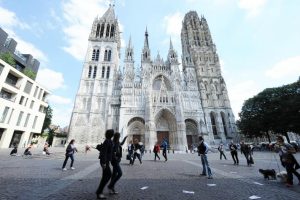
8 reasons to visit Rouen Cathedral (and why it’s the best place in Normandy)
We share with you the 8 reasons to come and visit Rouen’s Cathedral which is a must if you come to Rouen or Normandy.
Discover in this article the parks and walks of Rouen.
From the Jardin des Plantes to the Square Verdrel, via the Parc Grammont, many natural spaces are spread over the entire territory of Rouen.
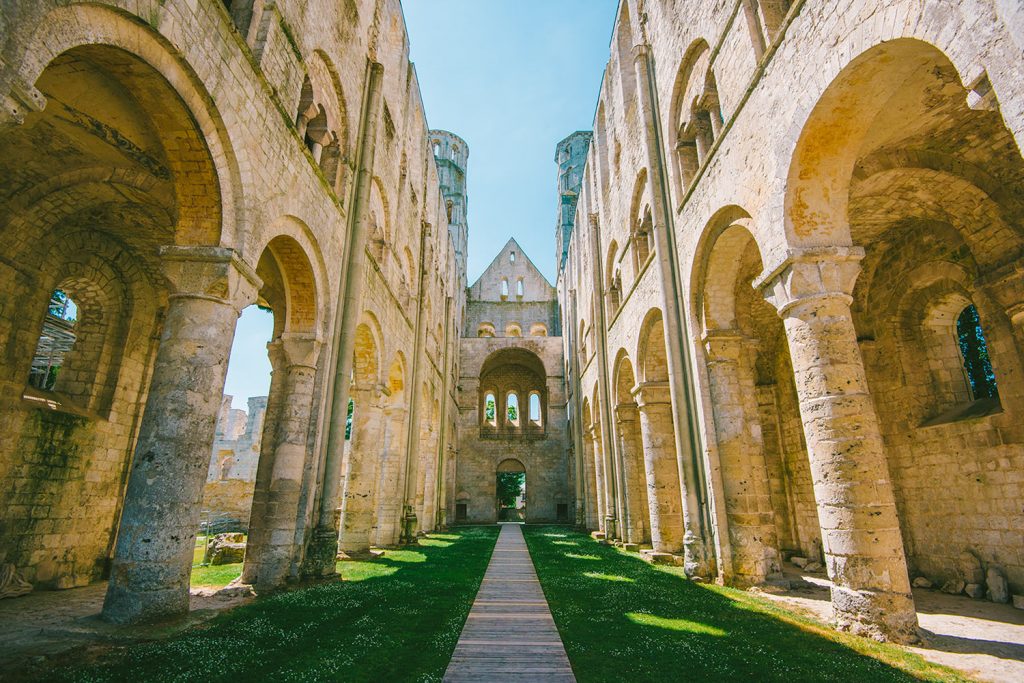
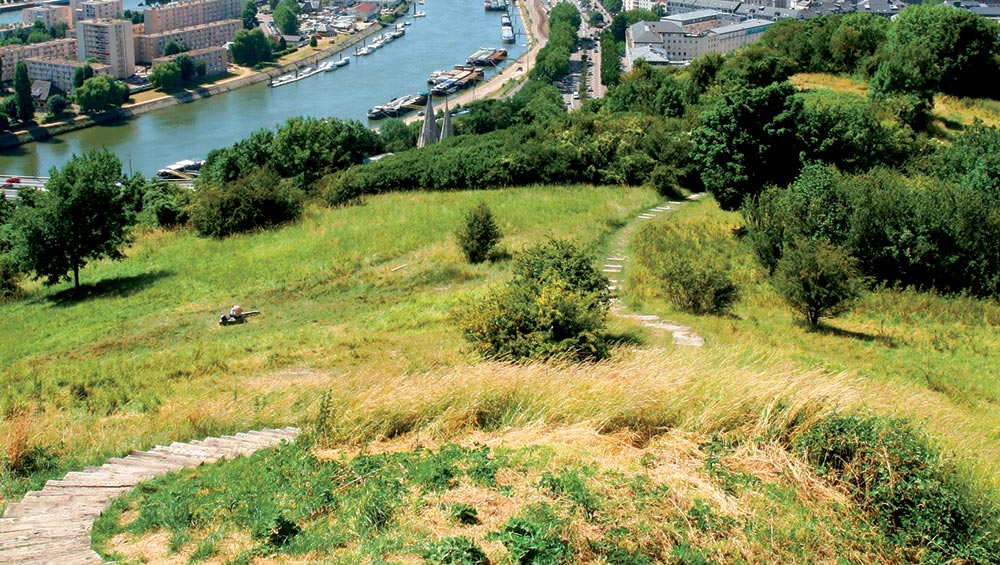
When the weather is clear, the Sainte-Catherine hill offers one of the most beautiful panoramas on both banks of Rouen. The place attracted Claude Monet and after him so many other artists who came to set up their easels there. It is from here that the leader of the Impressionists painted, among other things, his “general view of Rouen”, which can be seen at the city’s Museum of Fine Arts. From rue Henri-Rivière to the Mont-Gargan cemetery, this return to the mountainous sources of Rouen artistic inspiration will take you up some 525 steps. Do not forget your camera !
Fast line: F5 (Saint-Paul stop)
Bus: 13 (Saint-Paul stop)
Departure: Rue Henri-Rivière (Mont-Gargan cemetery)
Arrival: Panorama
Length: 2.8 km
Journey time: between 1/2h and 3/4h
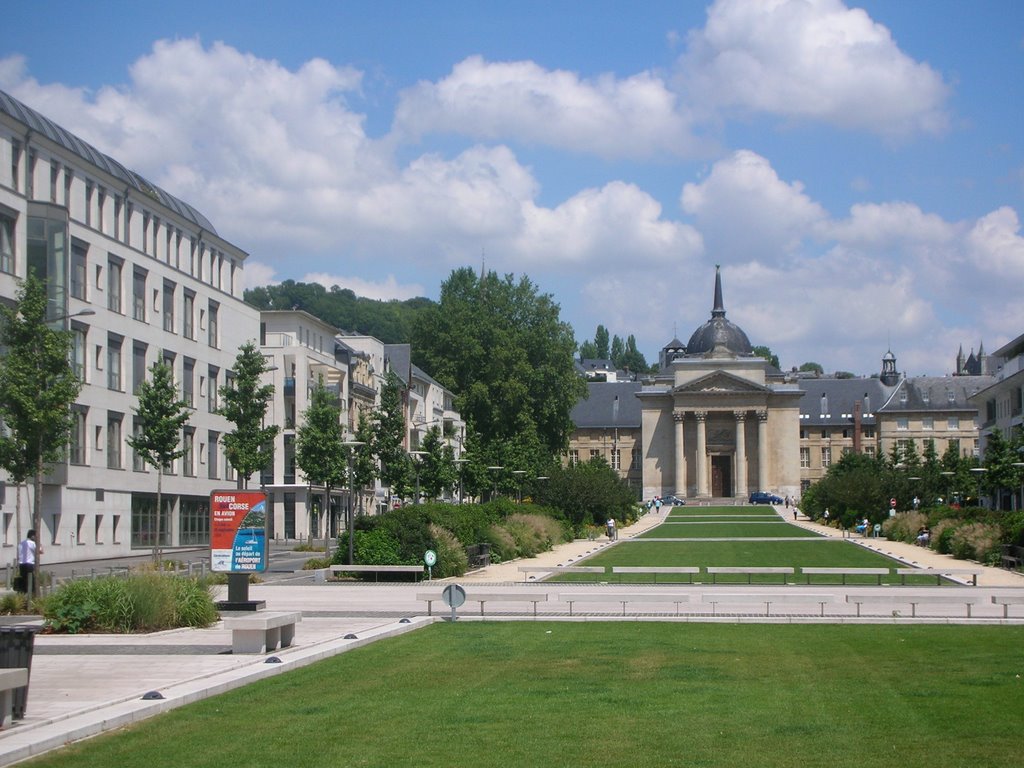
Generous axis 32 meters wide, the avenue Pasteur is organized around a central lawn framed by shrubs in shimmering colors and by a double alley of Ginkgo biloba. It descends gently towards a vast two-hectare garden which opens onto a range of tall grasses called Herbe de la Pampa, Miscanthus, Pennisetum.
Very popular with students from the nearby faculty and local residents, the pedestrian promenade continues along the flowering ash trees, Burgundy oaks, silver lindens and maples to end in a grove of willows and shrubs that evoke the presence of the Seine. At night, the avenue lit up with candelabra and small lights that make the lawns iridescent offers a magical perspective from Place de la Madeleine to the Picasso cranes, also illuminated on the other side of the river.
TEOR: 1, 2, 3
Buses: 9, 26, 29
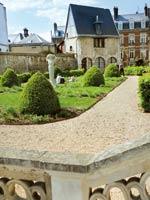
Evolving for several decades, the garden now named Masséot-Abaquesne, in memory of this 16th century potter, offers privacy in the heart of the dense urban fabric of the city of Rouen.
This garden first had a classic English layout with its winding paths and its remarkable spontaneous trees. Accompanied at the time
by a bandstand whose woodwork we can still admire on the 1st floor of the museum, the garden was then enclosed by the executioner’s house and its courtyard. It was only in the second half of the 20th century that this garden underwent a major transformation. Indeed, the paths were replaced by a high garden structured in the French style, accompanied by topiaries and alignments of trees and shrubs.
In 2009, the City of Rouen commissioned a project to embellish this garden on the occasion of the Normandy Impressionism festival. City departments have designed a garden with varied plant structures that soften it with the help of perennial plants that are light and undulating in the wind. These plants enliven the courtyard and become exuberant in order to apostrophize the visitor immersed in a garden that looks like the 19th century.
Now composed of three distinct spaces, the garden evolves over the four seasons around the God Pan, Sèvres ceramics placed on the central lawn. This statue from the City’s Jardin des Plantes challenges and refers to the museum’s collections.
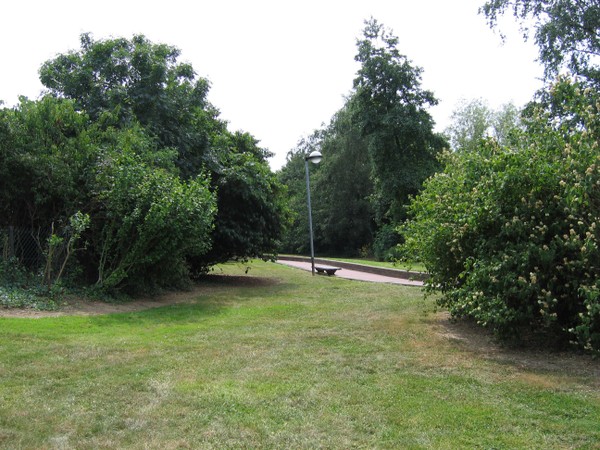
Built in 1985, this garden had a dual objective: to create effective protection against the noise emitted by traffic on the eastern expressway, and to prevent the isolation of the Mont-Gargan district linking the Saint-Marc and Champ-de- March.
Established on a slab, this astonishing green space is subject to delicate technical constraints: possible problems of overloading, sealing, rainwater drainage, etc.
Light materials were therefore used as substrates (high density expanded polystyrene, foam of organic resin…) and the choice fell on plants with superficial roots such as roses!
This explains the large presence of the queen of flowers in the Saint-Paul garden. This one has no less than 23 different essences responding to the sweet names of “Swany”.
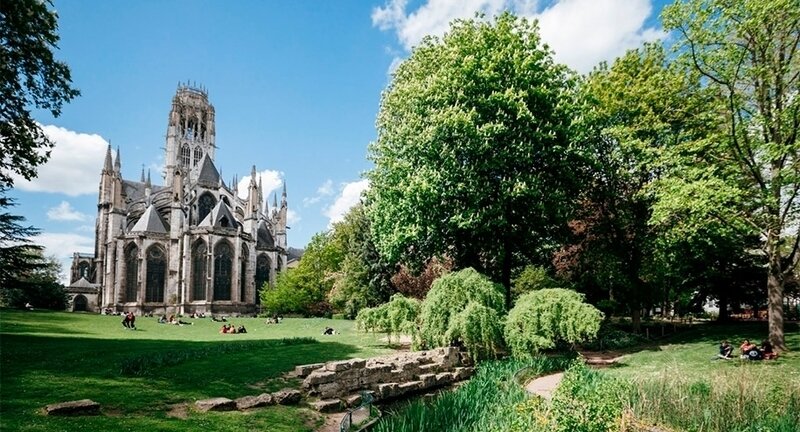
On the vast undulating lawn, under the rays of a sun tempered by the shade of the chestnut trees and the plane trees, many are those who rest, discuss or roll in the grass. A place of relaxation, halfway between the urban park and the meadow, this garden is also a pedestrian passage that connects the city center to the Saint-Nicaise and Saint-Vivien districts.
Created at the beginning of the 19th century on the land adjoining the Saint-Ouen abbey, the gardens astonish by this mix of styles which invites discovery. Located at the foot of the Hôtel de Ville, their historical core “à la française” radiates around a large round pool, an aquatic setting for a sculpture evoking the kidnapping of Dejanira by the Centaur Nessus. Because history and landscape are intimately intertwined, the remains of the abbey wall have been enhanced and integrated into a “peat bog”. Note also the presence near the Portail des Marmousets of the exact reproduction of the Jellinge stone in Denmark, a thousand years old, offered to the City of Rouen on the occasion of the millennium of Normandy in 1911.
A historic garden therefore, but also a contemporary space. Separated by an alley of chestnut trees which extends the pedestrianized rue de l’Abbé-de-l’épée, a large playground has brought together toddlers and older children since the extension of the garden in 1982. The lawn then descends in a gentle slope towards the goldfish basin… And in the background, the apse of the Saint-Ouen abbey church completes the look of the countryside.
An essential place in the archiepiscopal history of Rouen, the Cour d’Albane revealed its secrets during archaeological excavations in 1987 and 1991: Ancient villa with atrium, large early Christian church from the 4th century, medieval chapel, partially built 13th century cloister, bell ovens in the 15th century, canonical houses…
From this past, the design inspirations for the 8 gardens that make up the Albane Gardens were drawn. The garden of the Cloister, located below, centerpiece of the development, resumes in its delimitation the volume of the unfinished cloister. The mineral and vegetal treatment makes it possible to apprehend the contours and surfaces of the building. 13,000 box trees make up the central square. The fastigiated yews mark the buttresses of the building with their presence.
The other gardens, located in the peripheral and elevated part of the courtyard, take up 7 historical themes, in 7 small, strongly delimited spaces: the courtyard of the sculptors, the porch of the 4 winds, the garden of the stonemason, the garden of the lime tree, the cat garden, the iron cross garden and the garden of the Saint Romain chapel.
Architectural pieces from the renovation campaigns of the cathedral have been inserted and punctuate with their decorations the low walls surrounding the different places. The choice of plants planted was guided by the desire to accommodate a faunal diversity within this space, with the aim of making it a haven of biodiversity in the heart of the city.
Adjoining the cathedral, this garden follows the lines of a cloister which should have been built in the 13th century. A carpet of boxwood and 16 Irish yews structure the space. The whole of this plant zone hosts a wide variety of species in order to allow the development of biodiversity in the city centre.
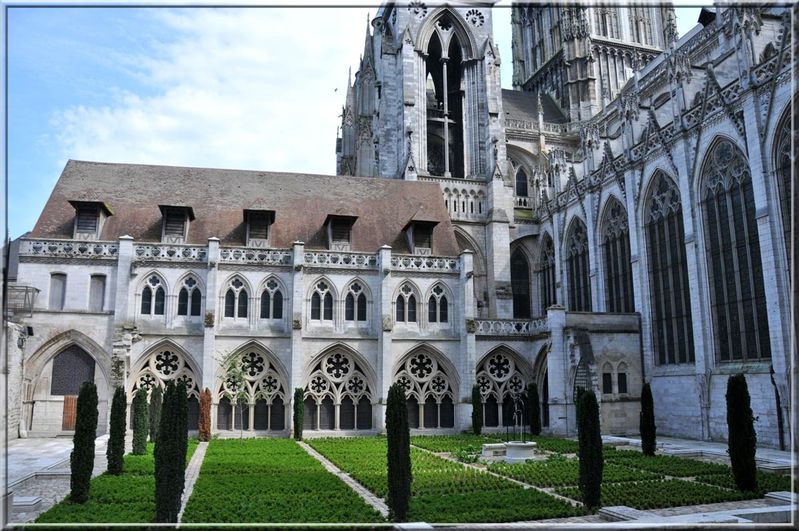
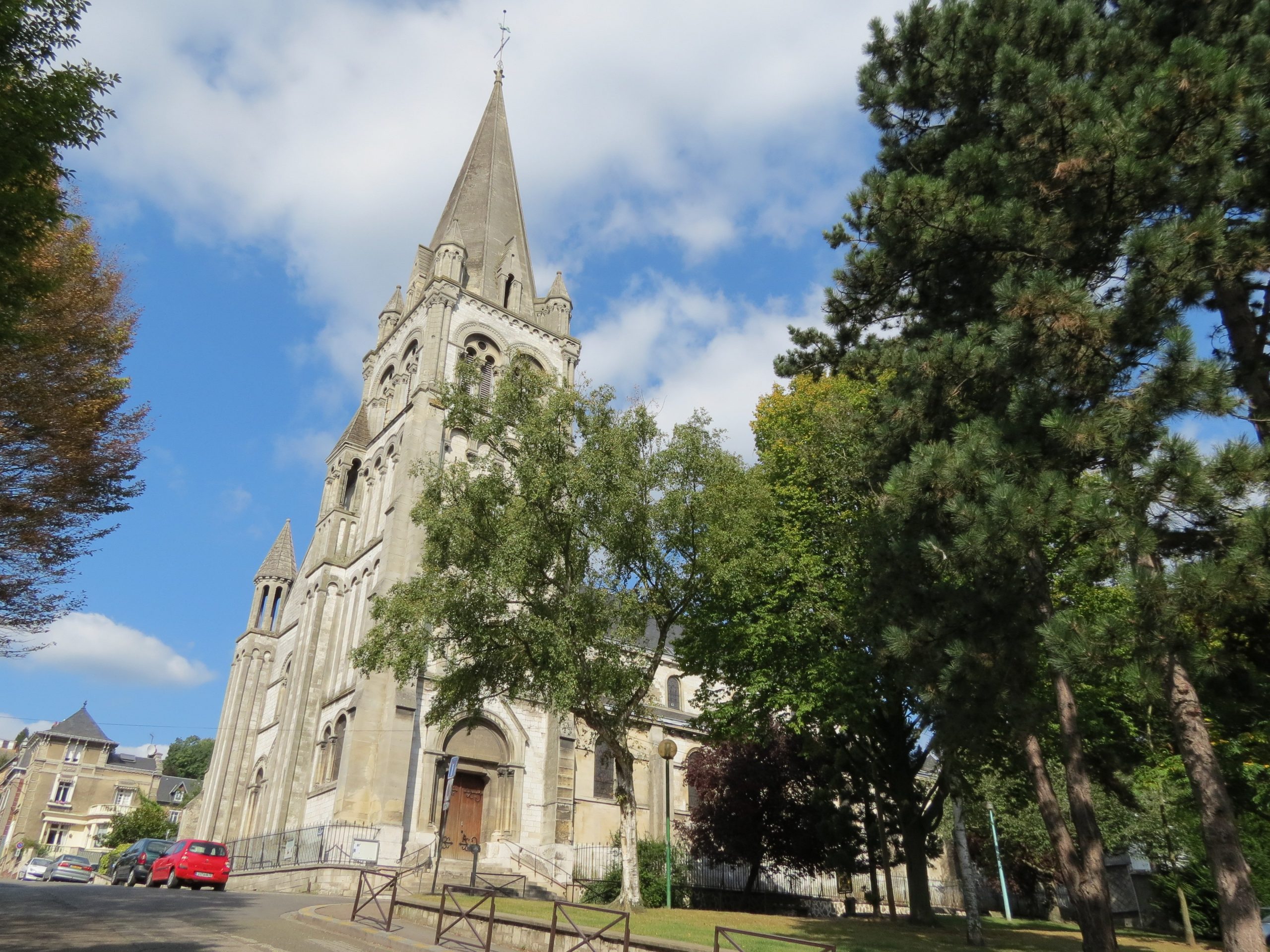
Covering an area of 3,500 m2, the Achille-Lefort Park is located rue du Renard, in the heart of the West district. Frequented by the public and also by children from the school and the leisure center of the same name, this park is about to extend its opening hours. Some development and embellishment work was carried out in 2013. A tree replanting campaign made it possible to renew, enrich and diversify the existing tree heritage.
Areas of undergrowth are preserved, the paths barely formalized are left as they are in order to maintain the natural and wooded side of the place. Two remarkable trees are present in the heart of the park: a beech (Fagus sylvatica), and a cedar (Cedrus atlantica). They are accompanied by children’s games distributed in the park and, not far from the entrance, two statues representing Monsieur and Madame de Boishebert, owners at the time of the place, dressed as a gardener.
Well known to fans of leisure sports and lovers of major sporting events, “Saint-Ex” is also a landscape park of great importance.
It is the garden of the three rivers. Above, flow the Robec and the Clérette. Below, the Aubette which, although less familiar to the minds of the people of Rouen, nevertheless gives this vast outdoor sports complex, the covered hall and the multi-sports gymnasium its full dimension of an authentic landscaped park. Its pleasant banks are one of the many prides of the gardeners of the City. Bank plants abound there in a stimulating freshness conducive to the strides of joggers and the thoughts of walkers. The paths surrounding the football fields and bordering the baseball field are planted with flowering shrubs, bulbs and perennials.
The marsh iris, this flower of Louis, which by deformation has become “fleur de lys”, grows there with its feet in the water. From a beautiful height, its luminous yellow illuminates the beautiful days of spring… But in all seasons, the collections of trees of “Saint-Ex” are the real champions of the park. Tulip trees, Louisiana bald cypresses, Caucasian walnut trees, metasequoias soar powerfully against the sky.
The wooded areas in Rouen constitute a natural heritage of an exceptional surface area for a location in the heart of the agglomeration:
So many spaces still unknown to Rouennais that constitute the backbone of our urban landscape.
Like all forests, their environmental value is essential (climate regulation, biodiversity, etc.). Everyone can find in these places of walk and leisure, a direct contact with the flora and the fauna, in all seasons.
Green belt overlooking the districts of Grand’Mare and Lombardy, the wooded slopes have woodland scents reminiscent of mountainside paths. Extended by the Hêtraie playground, the walk gently puts the walker back in an urban atmosphere.
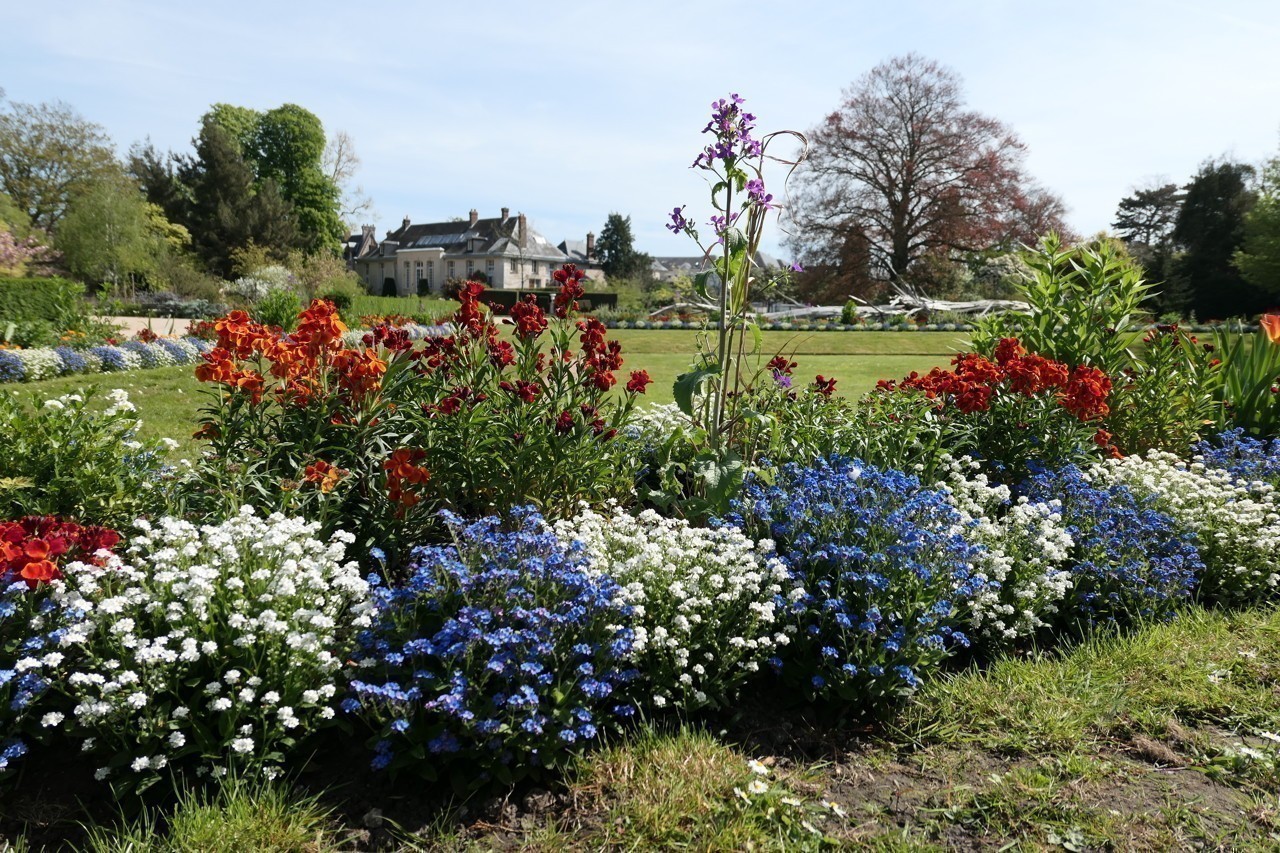
Sheltered from the hustle and bustle of the quays, these six thousand square meters of lawns invite you to stroll under the shaded gaze of some beautiful specimen trees.
Near the Saint-Sever church with its red brick silhouette, this garden has a well whose vast mouth streams with flowers. Half converted into a playground, its rear part unrolls a lawn surrounded by a promenade.
To the south of the city, this garden is an ideal place for family walks. Very popular, it also responds to a scientific vocation of conservation of plant species from the five continents.
The central greenhouse, which dominates the perspective from its elevation, lightly bears its almost 170 years. Listed in the Supplementary Inventory of Historic Monuments, it is home to arid environment plants, Mediterranean utility plants and even carnivorous plants. In the aviaries, parakeets, parrots, Chinese quail, golden pheasants and other amazing birds compete in color with the surrounding flowers, while in freedom, peacocks, ducks, water turtles walk along the edge of the small canal.
The cultural and educational vocation of the park is in keeping with the visitors’ taste for relaxation. Redesigned several times to meet the public’s leisure demands, the park nevertheless remains faithful to its primary mission as a botanical garden with its living collections and seed banks.
At the highest point of the park, on the white stone belvedere, a single glance embraces the cathedral, the Sainte-Catherine hill, the Bonsecours basilica… Open to the city, this site which sheltered, a few years still the slaughterhouses of Rouen, was composed in a different spirit, although complementary, of the Jardin des Plantes. This space of two and a half hectares was subsidized for half by European funds.
The park is designed by Jacqueline Osty, an internationally renowned landscape designer. It is structured in various areas of conviviality and creativity, connected by promenade malls. Land of the imagination, it initiates a floral alphabet whose missing letters are left to daydreams of walkers. A pond with floating plants, banks of woven willows, a maçaranduba wooden footbridge at water level, an island with five varieties of willows, the scent of aquatic mint… The stroll takes on reliefs and changing patterns conducive to the escape.
An area doped with chlorophyll, the park plays the card of bringing together children, teenagers, parents and grandparents. Around one of the most shared things in the world, the taste for play, walkers of all ages express their desires. Slides, slides – two tracks for rollerblades – and games of ball, petanque, or even, more calm, appetites for reading, discovering nature, chess games or soft music are on the program. Stage games are also present with an open-air theater with bleachers of white stones…
A meadow in the heart of the city, a large river walk over more than 3km between concrete or cobblestone walkways, play areas for children, beds decorated with flowers or a pétanque court, the Prairie Saint-Sever allows walkers to enter a panel of atmospheres dedicated to relaxation.
Extending from the Corneille bridge to the tip of the Rollet peninsula, the quays on the left bank have been extensively developed since 2013 to the delight of local residents.
The inhabitants can flourish on the banks of the Seine, more wooded and fully devoted to relaxation thanks to its green spaces, to well-being with the balance courses, climbing structures and leisure activities especially for children. with many slides and swings.
This developed part, which extends over 1.5 hectares, is divided into several categories. The first with the Claquedent gardens extends between the Boieldieu and Jeanne-d’Arc bridges. This space is declined in the form of a landscaped assembly where children find various and varied facilities.
Between the Jeanne-d’Arc and Guillaume-le-Conquérant bridges, the Esplanade de la Curanderie is a more open space that hosts events such as Rouen-sur-Mer. Urban sports and leisure grounds are also provided.
Finally, a footbridge offers new access to pedestrians from the quai Cavelier-de-la-Salle.
This set of amenities makes this place the unmissable meeting place for Rouen residents.
On the banks of the Seine Left Bank just in front of Docks 76, a walk of almost 2km stretches from the Guillaume-le-Conquérant bridge to the tip of the Rollet peninsula.
The development of the banks of the Seine consists of adapting former industrial spaces for the public. This project is part of a broader plan which is to develop the Flaubert district into an eco-district.
On this stretch located just behind hangars 106, 107 and 108 you can find the rail garden which offers a playground for children from 3 to 10 years old, two wooden structures for children over 10 years old, a flowery relaxation area and a pétanque court.
This former space dedicated to the storage of coal has once again become a place entirely devoted to nature with a forest mound, a flowery park and a long promenade reserved for relaxation and leisure with family and friends. In addition, the Rollet peninsula offers an exceptional panorama of the city and the port.
Haven of guinguettes in the 19th century and bridgehead of the river port for ten centuries, Île Lacroix has much more than its feet in the Seine and the green banks. It has a sailor’s soul and this loop circuit of around 1h30 will convince you of it. At the level of the nautical center, you can admire the Saint-Paul church and the Sainte-Catherine coast.
The upstream point of the island (at the eastern end) offers a large lawn ideal for ball games and a beautiful view of the Bonsecours basilica and the Joan of Arc monument. The journey ends as it began: under the Corneille bridge.
Halfway between the Jardin des Plantes and the Saint-Sever shopping center, the Pinchon squapre is located near the Rosa-Parks school group and the Mulot and Carpentier schools.
Spacious, well oriented, facing a beautiful historic building (the former normal school, which has become a regional knowledge center), it was completely redesigned and renovated in 2015.
It is made up of shrub beds, grassy areas and a variety of plants. Children can have fun on a playground.

We share with you the 8 reasons to come and visit Rouen’s Cathedral which is a must if you come to Rouen or Normandy.

Nous partageons avec vous les 8 raisons de venir visiter la cathédrale de Rouen qui est un must si vous venez à Rouen ou en Normandie.
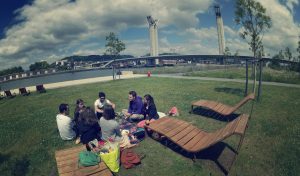
Rouen is in Normandy and is the capital of Normandy.
Rouen is in the north of France and at 1h30 by train of Paris.
You can see specifically where is Rouen with the map: